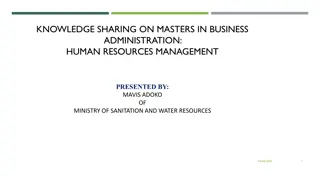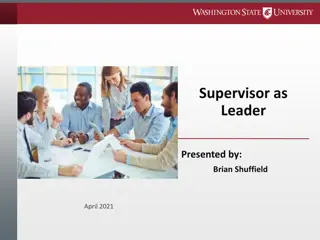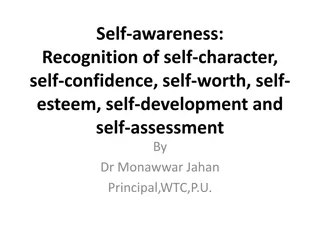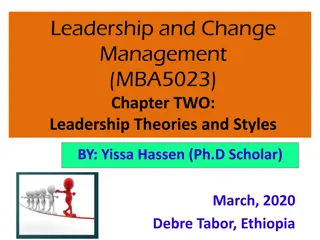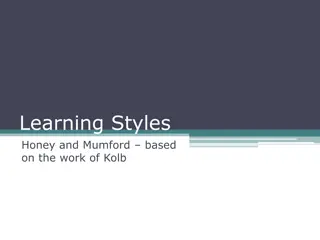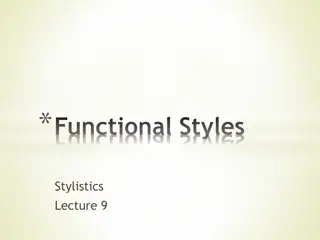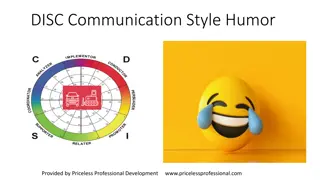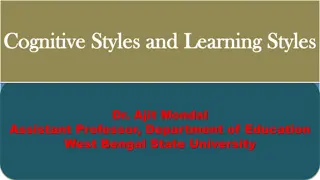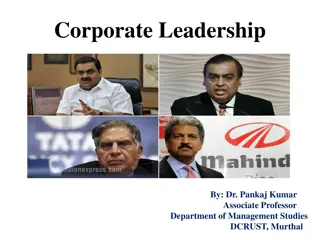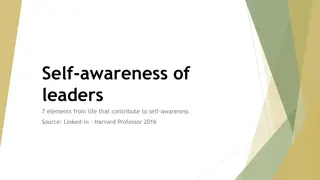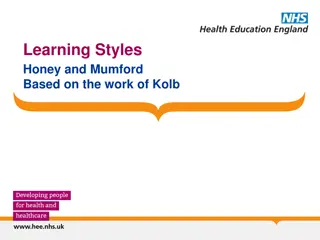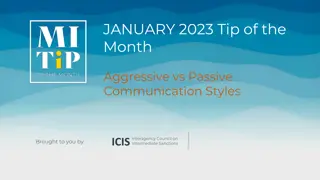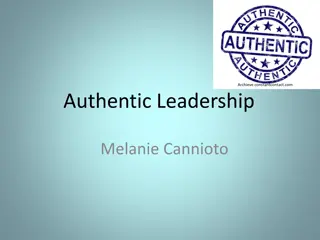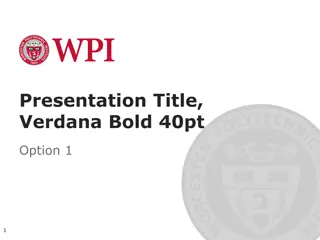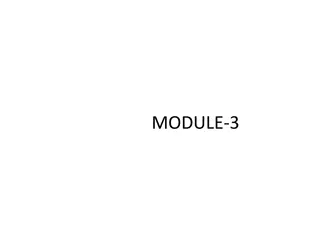Exploring Different Leadership Styles and Self-Awareness in Leadership
Dive into the world of leadership styles, self-awareness, and emotional intelligence. Discover how attitudes, beliefs, and habits impact performance, and learn about facilitating and collaborative leadership for the future. Enhance your leadership skills and mindset towards becoming an emotionally intelligent leader who empowers others to reach their potential.
Download Presentation

Please find below an Image/Link to download the presentation.
The content on the website is provided AS IS for your information and personal use only. It may not be sold, licensed, or shared on other websites without obtaining consent from the author. Download presentation by click this link. If you encounter any issues during the download, it is possible that the publisher has removed the file from their server.
E N D
Presentation Transcript
Leadership Styles Leadership Styles
Whats your leadership Style?
Image result for leadership styles What s your What s your leadership leadership Style? Style?
What are we going to look at today? Leadership Styles The I in leader Self awareness Evaluating your style Leadership Styles
Leadership Styles Knowing Oneself The I in Leader
I Attitudes Take a moment to and think about and make a list of your attitudes to various work situations: Giving a presentation Attending a meeting Writing a report Your annual performance review The difficult colleague you have to work with Other team members
Interferences Interferences How many of these attitudes have been negative? How many of these attitudes have been positive? How would your performance improve if your attitudes, beliefs and habits were all positive?
In groups read the statement below. What do you think it means? Have you got examples when you have acted as a facilitator or collaborative leader? Think Piece FEEDBACK What does Emotional Intelligence mean to you?
Think Piece Think Piece The leaders of the future will need to be facilitators, leaders who enable others to develop their own leadership and potential. They will also be collaborative leaders, highly skilled in developing and sustaining mutually beneficial partnerships and able to influence and lead teams. These both require a new set of skills and attitudes for leadership emotionally intelligent skills and attitudes.
Do you help others to develop their own leadership and potential? Facilitators When leading teams are you able to lead teams to encourage others to work to agreed end? Collaborative leadres Think Piece Are you able ot understand your beliefs, values, attitudes, competencies (E.g to empathise)? Emotionally intelligent
In light of our discussions and reflections on EI what are the key features that you think will help some be a great leader? Group discussion Two lists The Good, the Bad and the Ugly Good leader Bad leader
The Six Leadership Styles Daniel Goleman s research found that leaders use six styles. Each springs from different components of emotional intelligence. Typically, the best, most effective leaders act according to one or more of six distinct approaches to leadership and skilfully switch between the various styles depending on the situation. - The New Leaders. Daniel Goleman
Commanding Visionary Leadership Styles Daniel Goleman Affiliative Democratic Pacesetting Coaching
Commanding Visionary Affiliative Democratic Pacesetting Coaching The leader s modus operandi Demands immediate compliance Mobilizes people toward a vision Creates harmony and builds emotional bonds Forges consensus through participation Sets high standards for performance Develops people for the future The style in a phrase Do what I tell you. Come with me. People come first. What do you think? Do as I do, now. Try this.
Commanding Visionary Affiliative Democratic Pacesetting Coaching The leader s modus operandi Demands immediate compliance Mobilizes people toward a vision Creates harmony and builds emotional bonds Forges consensus through participation Sets high standards for performance Develops people for the future The style in a phrase Do what I tell you. Come with me. People come first. What do you think? Do as I do, now. Try this. Underlying emotional intelligence competencies Drive to achieve, initiative, self- control Self- confidence, empathy, change catalyst Empathy, building relationships, communicati on Collaboration, team leadership, communicati on Conscientious -ness, drive to achieve, initiative Developing others, empathy, self- awareness
Commanding Visionary Affiliative Democratic Pacesetting Coaching The leader s modus operandi Demands immediate compliance Mobilizes people toward a vision Creates harmony and builds emotional bonds Forges consensus through participation Sets high standards for performance Develops people for the future The style in a phrase Do what I tell you. Come with me. People come first. What do you think? Do as I do, now. Try this. Underlying emotional intelligence competencies Drive to achieve, initiative, self- control Self-confidence, empathy, change catalyst Empathy, building relationships, communication Collaboration, team leadership, communication Conscientious- ness, drive to achieve, initiative Developing others, empathy, self- awareness When the style works best In a crisis, to kick start a turnaround, or with problem employees When changes require a new vision, or when a clear direction is needed To heal rifts in a team or to motivate people during stressful circumstances To build buy-in or consensus, or to get input from valuable employees To get quick results form a highly motivated and competent team To help an employee improve performance or develop long- term strengths
Commanding The leader s modus operandi Demands immediate compliance Overall impact on climate Positive or negative? The style in a phrase Do what I tell you. Underlying emotional intelligence competencies Drive to achieve, initiative, self- control When the style works best In a crisis, to kick start a turnaround, or with problem employees
Visionary The leader s modus operandi Mobilizes people toward a vision Overall impact on climate Positive or negative? The style in a phrase Come with me. Underlying emotional intelligence competencies Self-confidence, empathy, change catalyst When the style works best When changes require a new vision, or when a clear direction is needed
Affiliative The leader s modus operandi Creates harmony and builds emotional bonds Overall impact on climate Positive or negative? The style in a phrase People come first. Underlying emotional intelligence competencies Empathy, building relationships, communication When the style works best To heal rifts in a team or to motivate people during stressful circumstances
Democratic Pacesetting Coaching The leader s modus operandi Forges consensus through participation Sets high standards for performance Develops people for the future The style in a phrase What do you think? Do as I do, now. Try this. Underlying emotional intelligence competencies Collaboration, team leadership, communication Conscientious- ness, drive to achieve, initiative Developing others, empathy, self- awareness When the style works best To build buy-in or consensus, or to get input from valuable employees To get quick results form a highly motivated and competent team To help an employee improve performance or develop long- term strengths
Leadership Styles Which leadership style do you use most often? Now find and sit with those who share your leadership style Read about the positives and negatives of your primary style Share examples of when you have used this style positively or negatively



